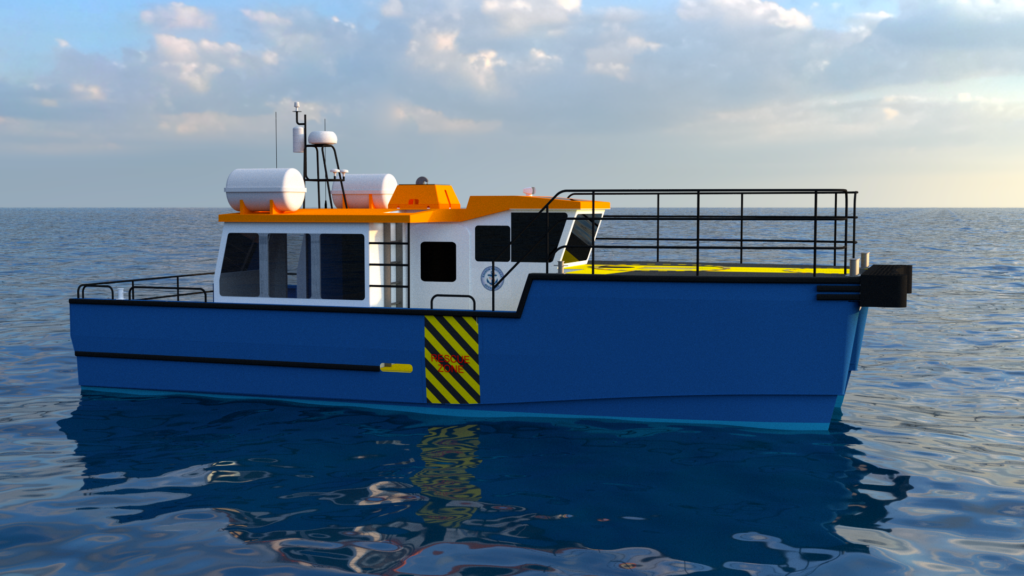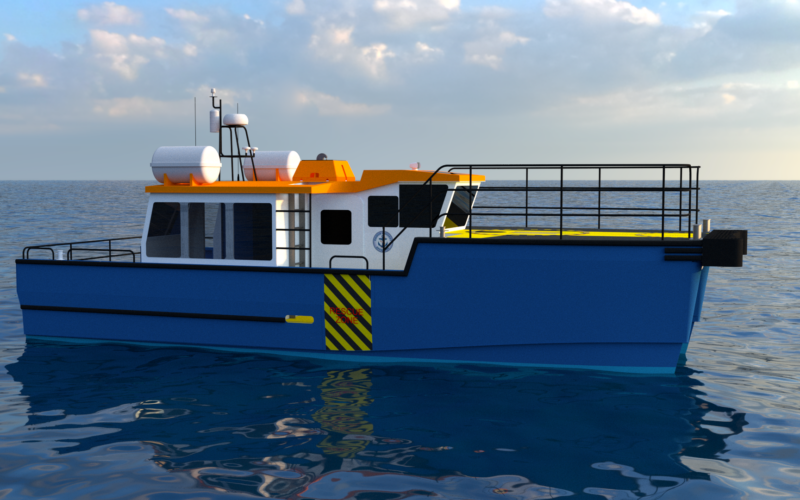(CUT OFF, La.) — Offshore vessel operator, builder and owner Edison Chouest Offshore (ECO) has started construction of the U.S. offshore wind industry’s first mini crew transfer vessel (CTV). The newbuild was designed by Chartwell Marine of the United Kingdom.
Set to begin operating in summer 2024 for Orsted and its U.S.-based joint venture partner, Eversource Energy, the CTV will simultaneously accompany the launch of ECO Edison, the first American-built service operation vessel (SOV) announced in April. This so-called “daughter craft” on the SOV can be deployed to efficiently maneuver crew across the Revolution Wind, South Fork Win, and Sunrise Wind offshore wind farms in the Northeast U.S. under development by the joint venture.

Building commenced in July at Edison Chouest’s Louisiana shipyard, employing an estimated 15 workers while drawing components from U.S. suppliers in five states. Using Chartwell’s innovative design from its expanded range of offshore wind support catamarans, ECO will manage the entire pipeline of construction and operation, supported by the incentives provided by the Inflation Reduction Act.
Chartwell’s design responds to the increasing demand in the U.S. offshore wind market for low-emission, cost-effective support vessels, with the catamaran’s optimized hull form offering efficient fuel use as well as stability and maneuverability in choppy waters.
A first for this vessel type, the Volvo Penta IPS (integrated propulsion system) provides high power and performance as well as onboard comfort for operators. The system allows for a wide number of optional features and functions, featuring forward-facing, twin counter-rotating propellers with an individually steerable IPS under the hull.
The 39-foot mini CTV has a capacity of up to 12 personnel and is designed to be conveniently deployed from ECO Edison during extended offshore stays, offering key staff comfortable and efficient access to turbines, vessels and other critical project infrastructure.
Working closely with Orsted throughout the design process, Chartwell conducted model testing in January to simulate and adapt to the specifications of the wind turbines that will be installed at the Northeast project sites. Considerations were made to facilitate Orsted’s Get Up Safe system, which is a motion-compensated hoist solution that enables technicians to safely transfer between small moving vessels and offshore wind turbines without a ladder.
“This vessel is the small but essential chain connecting SOVs and turbines together,” said Andy Page, managing director of Chartwell. “Engineers need to safely transition from larger vessels to turbines quickly and safely, and we set out to design an agile and streamlined vessel that has both bases covered.
“But it’s not a ‘one size fits all’ — turbines come in different configurations, with different requirements for effective crew transfer. That’s why we collaborated with Orsted to thoroughly test and tweak our design to the joint venture portfolio’s particular needs. We’re grateful for their collaboration and honored to have our design be the first out on U.S. waters servicing the renewables industry, and with Edison Chouest at the helm, no less.”
“ECO Edison needed to have the perfect partner on launch, and Chartwell has crafted her,” said Michael Braid, vice president of renewables at ECO. “As we look to further expand our fleet and activate it across a growing number of offshore wind projects, maintaining the efficiency of our transfers and our high level of technical availability will be key. Diversifying the range of vessels we use is one of the ways we can achieve that, but making sure they’re best-in-class is equally important.”
– Edison Chouest and Chartwell Marine

